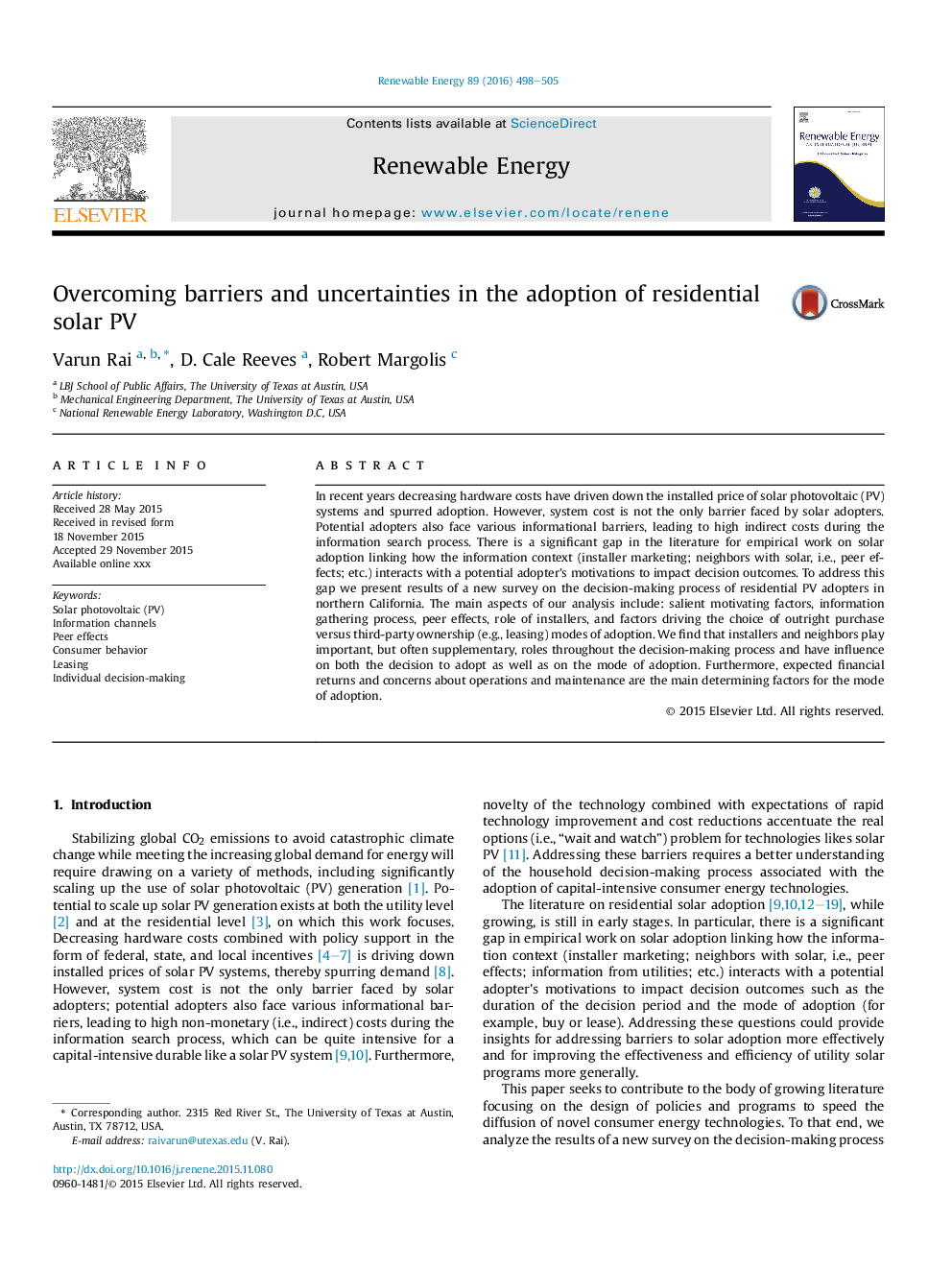| Article ID | Journal | Published Year | Pages | File Type |
|---|---|---|---|---|
| 6766368 | Renewable Energy | 2016 | 8 Pages |
Abstract
In recent years decreasing hardware costs have driven down the installed price of solar photovoltaic (PV) systems and spurred adoption. However, system cost is not the only barrier faced by solar adopters. Potential adopters also face various informational barriers, leading to high indirect costs during the information search process. There is a significant gap in the literature for empirical work on solar adoption linking how the information context (installer marketing; neighbors with solar, i.e., peer effects; etc.) interacts with a potential adopter's motivations to impact decision outcomes. To address this gap we present results of a new survey on the decision-making process of residential PV adopters in northern California. The main aspects of our analysis include: salient motivating factors, information gathering process, peer effects, role of installers, and factors driving the choice of outright purchase versus third-party ownership (e.g., leasing) modes of adoption. We find that installers and neighbors play important, but often supplementary, roles throughout the decision-making process and have influence on both the decision to adopt as well as on the mode of adoption. Furthermore, expected financial returns and concerns about operations and maintenance are the main determining factors for the mode of adoption.
Keywords
Related Topics
Physical Sciences and Engineering
Energy
Renewable Energy, Sustainability and the Environment
Authors
Varun Rai, D. Cale Reeves, Robert Margolis,
